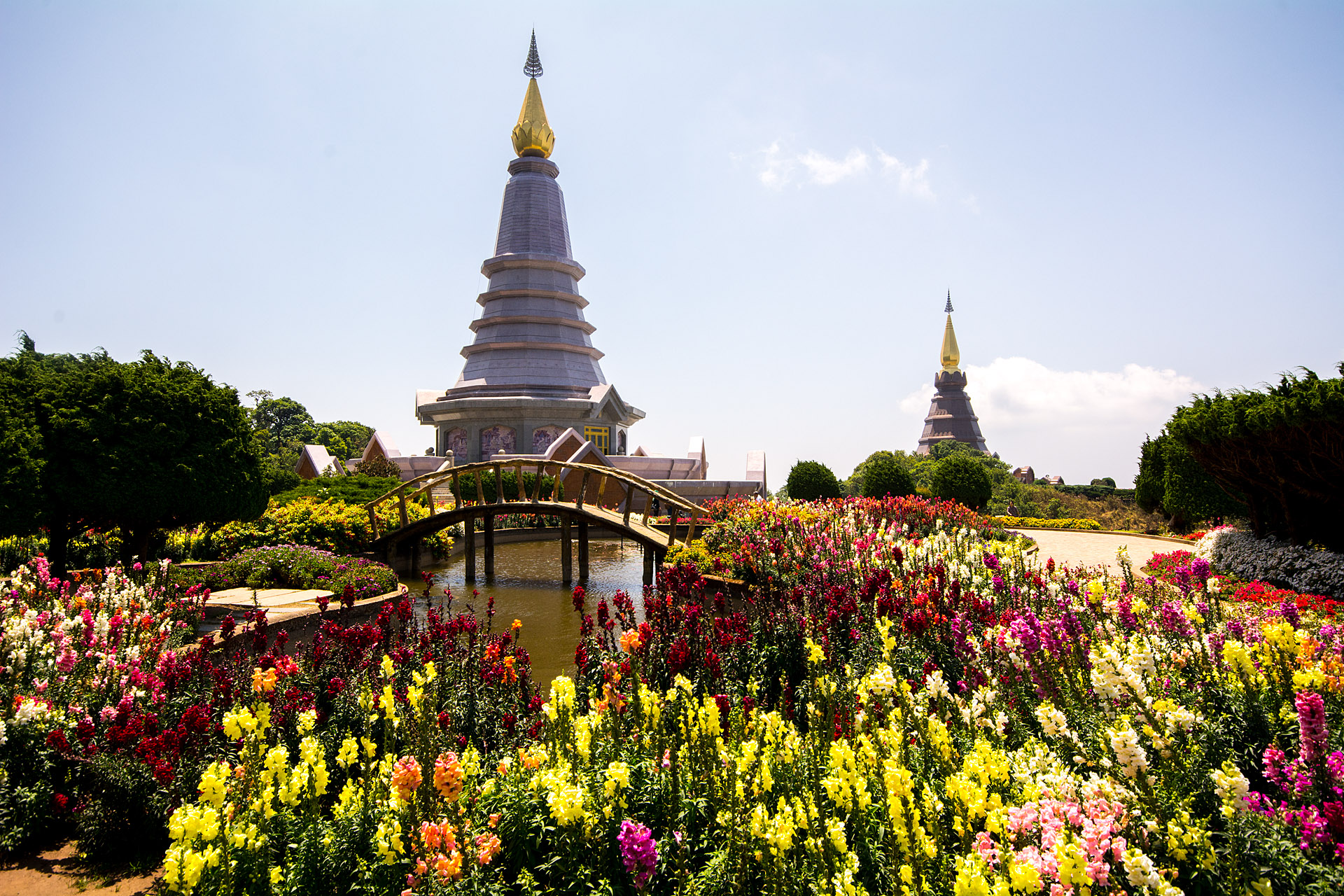We were beginning to discover that the national parks in Thailand were surprisingly difficult to visit independently. For one thing, traveling to the parks was often a multi-hour journey on aging roads that were frequently unmarked, and what signage existed was – shockingly – written in Thai. This was combined with the rather loose laws of the road that ensured travel of any distance would be a somewhat harrowing experience. Finally, when arriving at the parks, many of the trails were forbidden to be hiked without the presence of a local guide.
Determined nonetheless to see the local wildlife, and hoping to get in a little hiking as well, we chose a full-day birding trip to Doi Inthanon National Park. The park spans more than 185 square miles, covering many climate zones; warm, dry lowlands surround the park, but the higher elevations are home to cloud forests and rainforest-like climates. The national park is home to Doi Inthanon, a mountain with the highest peak in Thailand – a relative measure, of course, but the mountain stands a fairly-respectable 8,415 ft., and the climate at the top regularly drops below freezing during the cold season.
There is little in the way of large wildlife there, with hunting and encroaching populations driving out the largest animals, such as elephants and tigers, and substantially depleting the smaller ones such as deer and wild boars. However, the park boasts one of the best populations of birds in Thailand, with more than 360 species recorded at the park.
We left our townhouse in Chiang Mai at 5:00am, sleepily piling into the van and arriving at Doi Inthanon just as the sun was starting to peek over the mountains. Despite the incredible heat of the rest of the country, it was downright chilly in the higher elevations as we poked along the roadside, watching the birds flit busily around in the morning light. Our guide was sharp and knowledgeable, spotting and identifying the feathered residents at a pace that was difficult to keep up with.
Upon getting back into the car, our driver presented us with some woven coconut palm fronds in the shape of little fish. These charming little crafts bounced and twisted on the ends of the thick, grass-like stalks of the leaves. Each time we would leave the car, we would come back to a new creation – a pair of ducks, two shrimps, and an elaborate and long-limbed bird all joined the menagerie over the course of the day.
After a couple hours of bird-spotting, we stopped to see the twin chedis, named Phra Mahathat Naphamethanidon and Nophamethanidon. These huge structures were built to honor the 60th birthday of King Bhumibol Adulyadej in 1987, and Queen Sirikit in 1992. Surrounded by lush, beautiful gardens, the two chedis are perched on the side of a hill, overlooking the valley below. Unfortunately, our view of the valley was almost totally obscured by smoke, a common occurrence just before the rainy season each year, when local farmers burn their fields to clear the remains of their harvests. Despite the lackluster view, the flowers encircling he chedis were vibrant and beautiful, so we wandered the grounds for a while, eventually locating a swarm of spectacular green-tailed sunbirds darting among the fuchsia bushes.
Our trip for lunch found us meandering down a mountain road, lined on both side with hundreds of makeshift greenhouses. In 1979, a program was put into place to help the local hill tribes earn money growing something other than illegal opium, and to teach them modern, sustainable farming techniques. As a result of this project, the grounds outside of Doi Inthanon are covered in cultivated crops, from coffee, to cool-weather fruits like strawberries, and flowers such as orchids. This has allowed the hill tribes to continue sustaining themselves through agriculture, but without resorting to drug trade, or the slash-and-burn techniques that harm the land.
After lunch, we spent the rest of the afternoon visiting a number of streams and deeper forests, where the birds would go to escape the heat of the midday sun. Though mostly deep in the treetops, we were treated to a number of brightly-colored sightings. As we wrapped up the day and prepared to head home, our guide excitedly gestured to the trees ahead of us, and we spotted a chestnut-winged cuckoo. He informed us that he rarely gets to see this bird in the area, as it only appears in breeding season and is solitary and reclusive. Reclusive enough that it evaded our cameras, but was a treat to see nonetheless!

















































I love the fronds. The colors in these pictures are unbelievable. You two sure know how to run a camera and your stories are amazing. Can’t believe you have been gone 4 months now and can’t imagine all you have seen in that time. We love you guys!!! xoxo